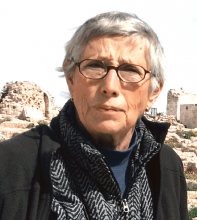You are here
New phase in the struggle for Syria
Feb 22,2018 - Last updated at Feb 22,2018
The deadly and destructive war in Syria did not end with the fall of Daesh's capital at Raqqa, in the north of the country, and negotiations on a political settlement to the seven-year conflict. There is now a new phase in the struggle for Syria, involving local and external actors formerly engaged in the campaign against Daesh.
Backed by Moscow and Tehran, Damascus is determined to regain lost Syrian territory and impose peace on its terms. Strategic allies, Russia and Iran support the survival of the government under President Bashar Assad until the country is stabilised. They see a stable Syria as a source of stability in an unstable region as well as a political asset. Despite its tactical coordination with Russia and Iran, Turkey occupies stretches of Syrian territory in the north, and continues to call for Assad's ouster, even though this risks Syria's collapse into anarchy and chaos. The US and Israel are prepared to risk such a scenario to keep Syria weak and divided, and undermine Russian and Iranian regional ambitions.
The current location of contestation is the Kurdish Afrin enclave in the northwest. Last month, Turkey invaded Afrin with the aim of driving out Kurdish fighters from the US-backed Syrian Democratic Forces’ (SDF) militia. Ankara argues the dominant Kurdish contingent in the SDF is an extension of the secessionist Turkish Kurdish Workers’ Party, which has been fighting the Turkish army since 1984.
To cool tensions with Ankara, Washington has renounced ties with the Afrin branch of the SDF, although Kurdish fighters from US-backed Kurdish-held areas to the east have travelled to Afrin to reinforce the defenders. So far, Turkish troops and surrogate units of the so-called "Free Syrian Army" have not entered Afrin's main town, provoking an all-out battle, but Turkish President Recep Tayyip Erdogan has declared his intention of mounting an assault on the town.
He has also threatened to order his troops and tanks to drive east towards the SDF-held town of Manbij, where some of the 2,000 US special operations troops are based, with the aim of occupying the area. From there, Erdogan has said his forces would sweep eastwards to clear US-troop embedded SDF fighters from the entire border zone. Such an adventure could risk clashes with the US, a NATO ally, and compel Washington to shift troops from bases in Iraq to Syria.
In spite of his bluster, Erdogan is unlikely to order his army to take on US forces operating with veteran Kurdish fighters along the border, and in the vast SDF-held swath of territory in Raqqa and Deir Al Zor provinces. His ongoing purge of Turkey's military, following the failed 2016 coup, has weakened and demoralised his country's armed forces. After his invasion of Afrin last month, his troops have advanced slowly as they have faced fierce Kurdish opposition and only with the heavy use of aerial bombing.
Consequently, Erdogan may have to look for a solution, which both clears the border zone of Kurdish fighters and allows him to declare victory in the ill-advised Afrin campaign.
Damascus has proposed the deployment of paramilitaries in Afrin with the objective of either bolstering Kurdish defences or taking over from the Kurds. The Turks have said they would accept only the latter option and would fight Syrian forces if they try to aid the Kurds.
The plan seems to be for a deployment of pro-government "popular" forces on the borders of Afrin, interposing between Turkish and Kurdish forces. This could suit the Kurds and Turks by averting or halting a full-scale battle and appeal to the government by denying Turkey a pretext to seize fresh Syrian territory. Damascus could also begin extending its writ to Afrin, a strategic military and political enclave. The government and the Kurds have called on Russia to declare a "no-fly zone" over Afrin to prevent Turkish warplanes from bombing SDF and government forces.
If fighting is avoided, a deal over Afrin could, eventually, serve as a model for the rest of the border zone. This would involve the extension of government control of this zone, and the reversion to Damascus rule of the 25 per cent of Syrian territory held by the Kurds. Having refused to join the anti-government opposition in spite of their alliance of convenience with the US, the Kurds have proposed such a deal in exchange for a federal arrangement.
While Damascus has rejected granting the Kurds autonomy, the government could accept the Kurds' demand for decentralisation. This would apply to Kurdish-majority areas rather than the Arab areas the Kurds hold in spite of protests from Arab residents.
This plan could meet Ankara's demand for an end to a Kurdish armed presence along the border and compel the US, also regarded as an aggressor by Damascus, to withdraw its 2,000 troops from Kurdish-controlled areas. It is, however, not clear how the US would respond. The Trump administration would like to retain a presence in northeastern and eastern Syria as a counterweight to Russia's permanent naval and air bases in Latakia province in the west.
The know-nothing Trump administration also seeks to expel Iranian forces and undermine Iranian influence in Syria. Unfortunately, the administration is being fed false information on Iran's role in Syria by the very same pro-Israel neo-conservatives who convinced George W. Bush to wage his disastrous 2003 war on Iraq.
While Iran has deployed units of its Revolutionary Guard and Shiite paramilitaries on the government side in the battle for Syria, if and when the conflict ends, pro-Iranian forces will withdraw. The majority of fighters will go home to Iraq back across Syria's eastern border. Tehran has offered aid for reconstruction and can expect to retain political influence rather than a military presence in Syria. Unlike in Iraq, Iran-sponsored Shiite paramilitaries keep a low profile in Syria, where the Sunni majority does not welcome Iranian interference.













